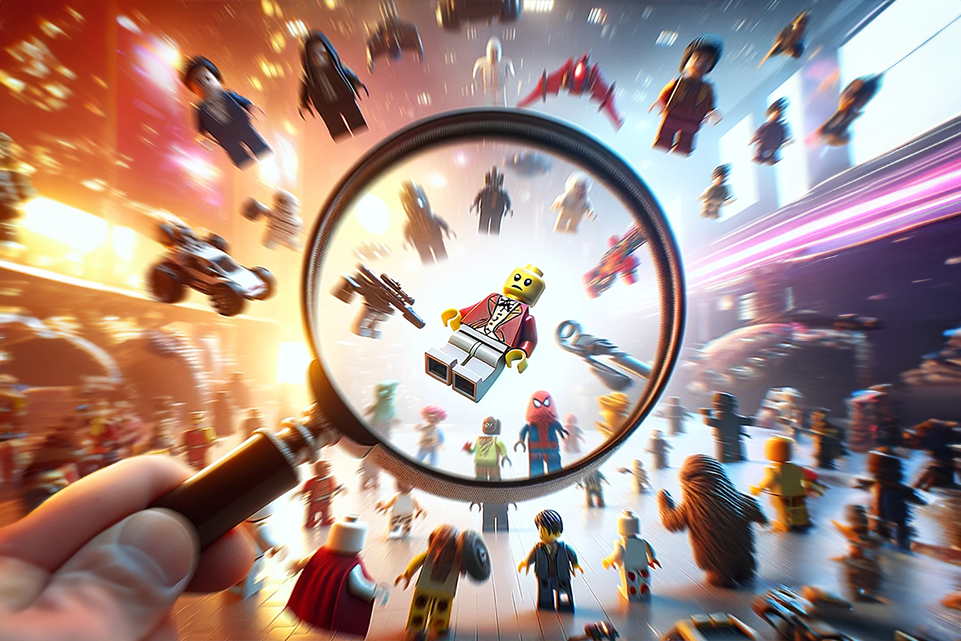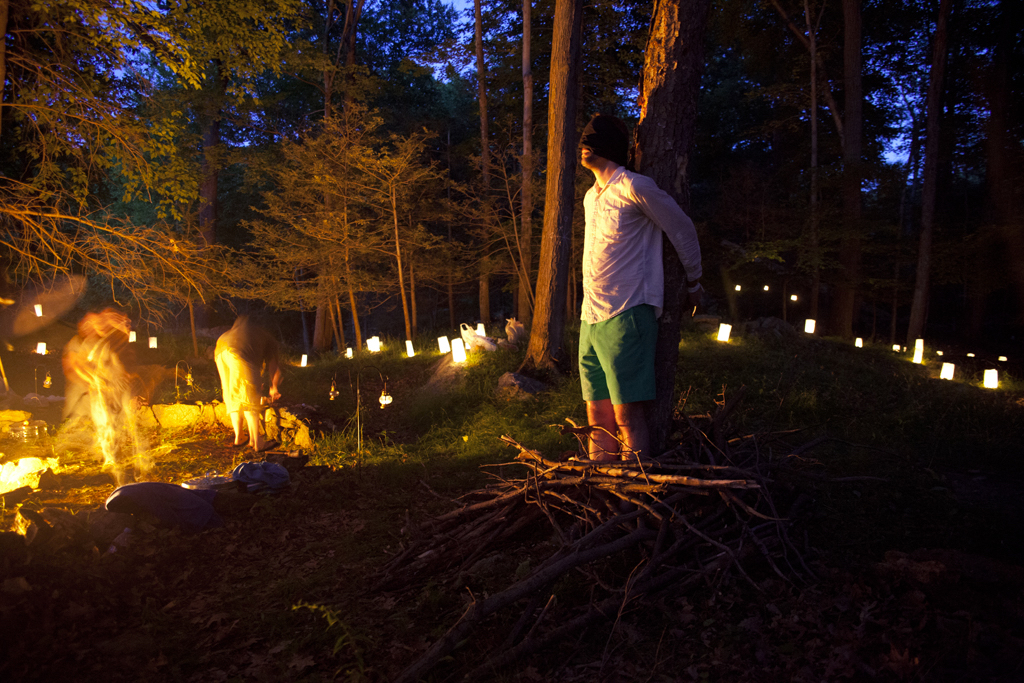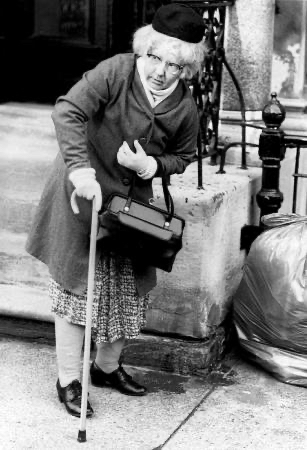
Scale is often considered the pinnacle of success. Whether it’s writing a best-selling novel or building an app that has millions of users, we judge the significance of work by how many people it reaches.
Odyssey Works—an experience design collective—takes the opposite approach. They create bespoke performances for an audience of one.
They spend months planning and researching a single person—learning everything they can about who they are designing for. They talk to their friends and family, read their favorite books, and learn about the decisions and questions that person is sitting with.
Then, they craft an in-depth experience to help that person explore the themes of their life. The result is a meticulously curated, months-long performance filled with surprise encounters and personalized art installations that seem to mirror the very fabric of a viewer’s existence. These experiences often involve a fusion of reality and art, challenging each viewer to confront their deepest fears, explore untapped desires, and unearth profound truths about themselves.
Photos from Carl Collins’s odyssey, where he was tied to a stake like Joan of Arc. Photo credit: Ayden LeRoux
Odyssey Works’s goal is to create an individualized experience that is exponentially more powerful than could be possible in a mass-market offering. And they often succeed—people have changed jobs, left relationships, and made other significant life changes after going through their “odysseys.”
Moreover, their work has established them as experts in the field of experience design. Their work has been covered by the New York Times, NPR, and Fast Company, and designers from companies like Apple, Meta, IDEO, and Nike have flocked to their training programs to learn their unique methodology.
Odyssey Works is an example of what I like to think of as “the power of one.” Instead of scaling up to find impact, sometimes you can do more significant work by scaling down. And focusing on a single person can lead to breakthroughs in science and business as well.
Medical insights from a single patient
For the past 16 months, I’ve been dealing with long Covid. At various points, I’ve dealt with headaches, brain fog, dysautonomia (nervous system dysfunction), and whole-body fatigue. While most people recover fully from Covid-19, some battle ongoing symptoms for years. And while I’ve been lucky to have a mild case and have found ways to manage the condition, there is no known cure.
In 2021, the National Institutes of Health (NIH) put $1 billion toward studying long Covid, known as the RECOVER project. They focused on large-scale observational studies, which haven’t yielded anything of note. Two years later, the money is running out without much to show for it. “I don’t know that they’ve contributed anything except more confusion,” said physician-scientist Eric Topol.
While the RECOVER project has made little impact by going shallow and broad, a small lab led by researcher Paul Hwang may have made a breakthrough. Instead of broad-scale studies, Hwang and his colleagues focused on the singular case of Amanda Twinam, a patient struggling with chronic fatigue and a rare genetic cancer disorder.
Chronic fatigue is an illness that looks similar to long Covid, and some researchers believe they are one and the same. Hwang and his team theorized that Twinam’s genetic disorder might be causing her fatigue, but when that hypothesis turned out to be wrong, he and his lab began an intense investigation to try and discover the root cause.
Over several years, they put her through a battery of biochemical tests. Eventually, they found that she was producing an excessive amount of the protein WASF3 and that other people with chronic fatigue also had heightened levels. They then genetically engineered “Amanda mice,” which also over-produced this protein, and found that they too suffered from fatigue.
“Amazing findings in medicine are sometimes based on one patient,” Hwang said.
The research on this protein is still early; they are just now planning a clinical trial to see if it works as a target for treatment. And it’s unlikely that a finding such as this could have come out of the broad studies prioritized by the RECOVER initiative.
Perhaps on the wild frontier of medicine, researchers need the same advice as early-stage founders: do things that don’t scale.
Designing products for a single person
In business, there are countless examples of products invented for a single person that then became mass-marketable. Here are a few of my favorites:
- Baking soda—invented in the 1800s by British chemist Alfred Bird so that he could make bread for his wife, who was allergic to yeast.
- The typewriter—one of the earliest versions was created in 1808 by an Italian man named Pelligrino Turri for his blind friend, Countess Carolina Fantoni da Fivizzano, so she could write letters to him.
- Magnetic shirt buttons—invented in 2013 by children’s clothing designer Maura Horton after she watched her husband with Parkinson’s disease struggle to dress himself. Her company recently licensed the patent to PVH, the $8 billion retailer that owns brands like Calvin Klein and Van Heusen.
The most common way people tap into the power of “one” in startups is to design for yourself as a user. In the words of Paul Graham,
“The way to get startup ideas is not to try to think of startup ideas. It's to look for problems, preferably problems you have yourself… Why is it so important to work on a problem you have? Among other things, it ensures the problem really exists. It sounds obvious to say you should only work on problems that exist.”
And while building for yourself is good advice (and is what I typically recommend to early-stage founders), it has two potential issues:
- The popularity of this approach means that products are disproportionately designed for the white 20- to 30-year-old men who make up the majority of the tech industry in the U.S. and Europe—what some have termed the “mom-on-demand economy.”
- A product eventually has to go beyond yourself. So as a founder, you still need to develop the empathy and perspective taking skills necessary to deeply understand another person’s experience so you can create something that solves their problems.
Given these pitfalls, how can you utilize the power of one in business beyond simply designing for yourself?
Doing experiential research
When industrial designer Pattie Moore was in her twenties in the 1970s, she would get up each morning and transform herself into an 80-year-old woman. She would put on makeup, don a brace that scrunched her shoulders together, put wax in her ears to dull her hearing, and put on glasses that distorted her vision. Then, she would venture out to see what life was like for the elderly.
As Dev Patnaik describes in his book, Wired to Care, Moore found that our world wasn’t designed for the elderly. Her work ended up shaping products at companies like Boeing, AT&T, and Johnson & Johnson. It turns out that when you design with the elderly in mind, you make products that are easier to use for all of us.
Pattie Moore dressed as an 80-year-old woman. Photo credit: Bruce Byers
This is one way to utilize the power of “one” in business—walk a mile in someone else’s shoes, and then use that first-hand experience to shape the products you build. You’re still designing for yourself in a sense, but with direct experience of what it’s like to live the life of your customer. For Moore, this meant traversing the world as an 80-year-old. For Uber CEO Dara Khosrowshahi, this meant becoming an Uber driver and seeing for himself how difficult a job it could be.
However, sometimes it isn’t possible to directly experience your customer’s situation. In that case, you can lean into another experiential tool: ethnographic research. This technique involves shadowing a person and learning as much as you can about them, so you can intimately understand how to design for them.
The Lego Group utilized this approach in the late 2000s when sales were falling and Lego was losing ground to other modern forms of play, like action figures and video games. As described in Harvard Business Review, Lego researchers embedded with families in the U.S. and Europe for months. They interviewed parents and children about their play experiences, took photos and videos, and accompanied families on shopping trips to toy stores. Ultimately, it led to a shift in product strategy and a turnaround for Lego as a company—all thanks to small-scale, in-depth research.
Putting it into practice
If you lean into the power of "one" as a founder, you'll learn more about your customer by going deep rather than wide. This will pay dividends not just in product design, but also in marketing, advertising, and sales.
Instead of doing broad but thin market research (e.g., customer surveys), focus on one person (or a small group) and go as deep as you can, learning everything about how your product fits into their broader lives. Or become your customer—spend a day, a month, or even a few years in the role you're trying to sell to before attempting to build a company in the space. This will pay dividends not just in product design, but also in marketing, advertising, and sales.
Any company can do this, but few choose to do it well, because it takes non-trivial effort. It’s easier to do the same mass-market research that everyone else is doing, but that won't get you beyond the competition. To truly innovate, you need to understand the customer and the problem better than the competition, and all this takes is legwork—sometimes a lot of legwork.
If you’d like to go deeper into small-scale research and the power of “one,” here are a few resources for further reading:
- Experience Design: A Participatory Manifesto: a book on experience design by the founder of Odyssey Works
- Wired to Care: a book on empathy in experience design, featuring Pattie Smith’s story (among many others).
- Small Data: The Tiny Clues That Uncover Huge Trends: a book on ethnographic research in business, including the Lego story.
Casey Rosengren is a founder and executive coach based in New York. If you’d like to learn more about coaching, drop him a note.
For early access to retreats, workshops, and subscriber-only content, follow him on Every:
The Only Subscription
You Need to
Stay at the
Edge of AI
The essential toolkit for those shaping the future
"This might be the best value you
can get from an AI subscription."
- Jay S.
Join 100,000+ leaders, builders, and innovators

Email address
Already have an account? Sign in
What is included in a subscription?
Daily insights from AI pioneers + early access to powerful AI tools









Comments
Don't have an account? Sign up!
Experiences that tap into our feelings are memorable and valuable. Well said. Thanks for pointing out this shift: we don't want more "things," we want to "feel" something that may be transformative.
You may want to consider that the real trap is set when you accept the dichotomy of free will versus determinism.